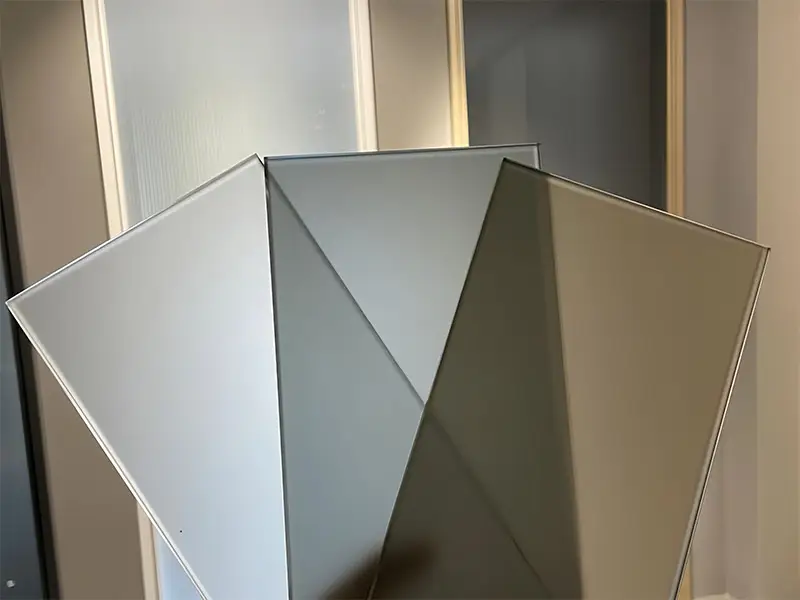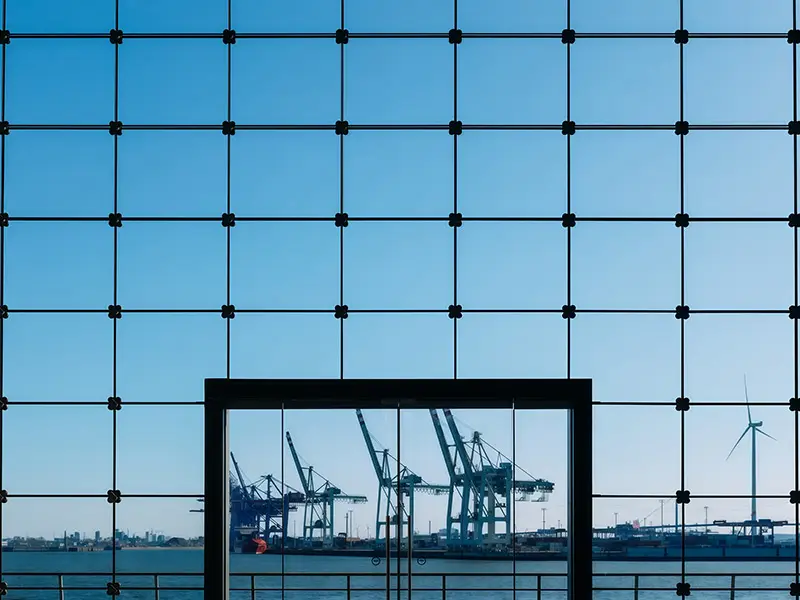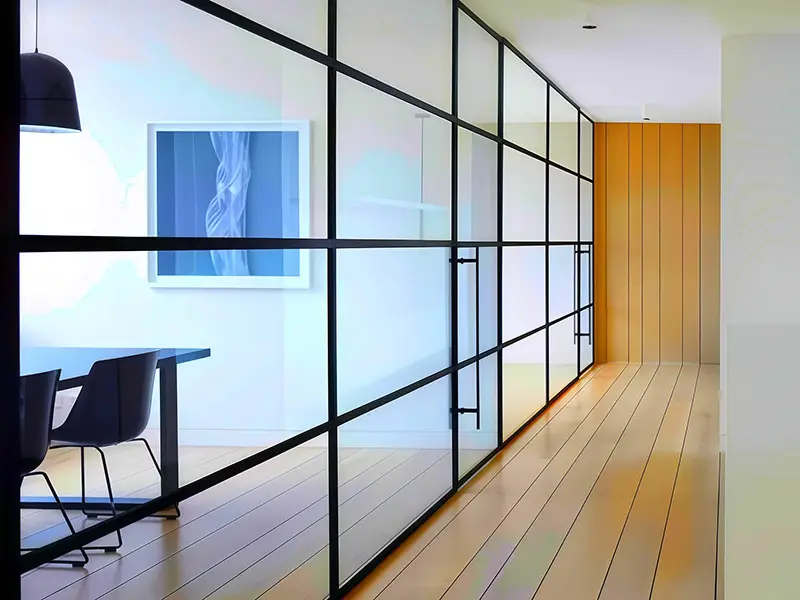






Heat reflective coated glass (also known as sunlight controlled coated glass) is a functional glass that selectively controls solar radiation by coating a metal or metal oxide film on the surface of the glass.
1、 Core principles and characteristics
Energy saving mechanism
(1) Infrared reflection: The film layer has a regulating effect on sunlight with a wavelength of 350-1800nm, with a reflectivity of 30% -50%, effectively blocking infrared thermal energy and reducing indoor temperature;
(2) UV Insulation: Absorbs over 95% of UV rays to protect indoor furniture from fading;
(3) Unidirectional perspective: It presents a mirror effect in strong light environments, combining privacy and decoration.
Optical parameters
|
Indicator |
Parameter range |
Compared to ordinary glass |
|
Sunshade coefficient |
0.2-0.6 (efficient insulation in summer) |
Ordinary glass 0.8-0.9 |
|
Visible Light Transmittance |
50% -80% (customizable) |
Higher transmittance |
|
Reflectivity |
10% -55% (color determines performance) |
Ordinary glass ≤ 10% |
2、 Production process and classification
Coating technology
(1) Vacuum magnetron sputtering: There are various film layers (gold, silver, chromium, etc.) with stronger reflective properties, but they need to be tempered and coated;
(2) Online vapor deposition: synchronous coating on float production line, capable of hot bending processing but with low reflectivity.
Color and Function
|
Indicator |
Parameter range |
Compared to ordinary glass |
|
Shading Coefficient |
0.2-0.6 (efficient insulation in summer) |
Ordinary glass 0.8-0.9 |
|
Visible Light Transmittance |
50% -80% (customizable) |
Higher transmittance |
|
Reflectivity |
10% -55% (color determines performance) |
Ordinary glass ≤ 10% |
3、 Application scenarios and selection
|
Scene |
Recommendation |
precautions |
|
Building curtain wall |
Vacuum magnetron sputtering coating |
Reflectivity ≤ 40% to prevent light pollution |
|
Xisun Window |
Low transparency type (shading coefficient<0.4) |
Paired with an external sunshade system |
|
Car window |
Light colored series with a transmittance of ≥ 70% |
The front windshield requires compliance certification |
|
Home balcony |
Hollow composite structure |
Energy saving efficiency increased by 30% |
4、 Performance comparison
Compare Low-E glass
(1) Heat reflective glass: focuses on reflecting solar radiation (low shading coefficient), suitable for hot areas;
(2) Low-E glass: focuses on blocking far-infrared thermal radiation (low heat transfer coefficient), suitable for high insulation requirements.
5、 Construction and maintenance
(1) Installation specifications:
(2) Curtain wall glass thickness ≥ 12mm, wind resistance;
(3) Reserve expansion joints to prevent thermal expansion and contraction.
Maintenance points:
(1) Neutral cleaning agents should be used for wiping, and strong acid/alkali solvents are prohibited;
(2) Nano coating agents can enhance wear resistance and self-cleaning properties.
Attention:
High reflectivity may cause light pollution and must comply with local building codes; The online coating process is preferred for surface design.







Heat-reflective coated glass
Category:
GLASS ENCYCLOPEDIA
Can frosted glass be cleaned with wet wipes?
→ Okay! Recommend using glass cleaner and fish scale cloth to avoid scratching the matte layer with hard objects.
How to choose between single-sided frosted and double-sided frosted?
→Single sided frosted (smooth surface facing inward) is easier to clean; Double sided frosted provides stronger privacy.
Will frosted glass reduce light transmittance?
→ It will decrease by about 20% -40%, and the ultra white glass substrate can reduce the loss of light transmission.
What are the common glass products in daily life?
Get A Quote
We will contact you within one working day. Please pay attention to your email.
Related Products









